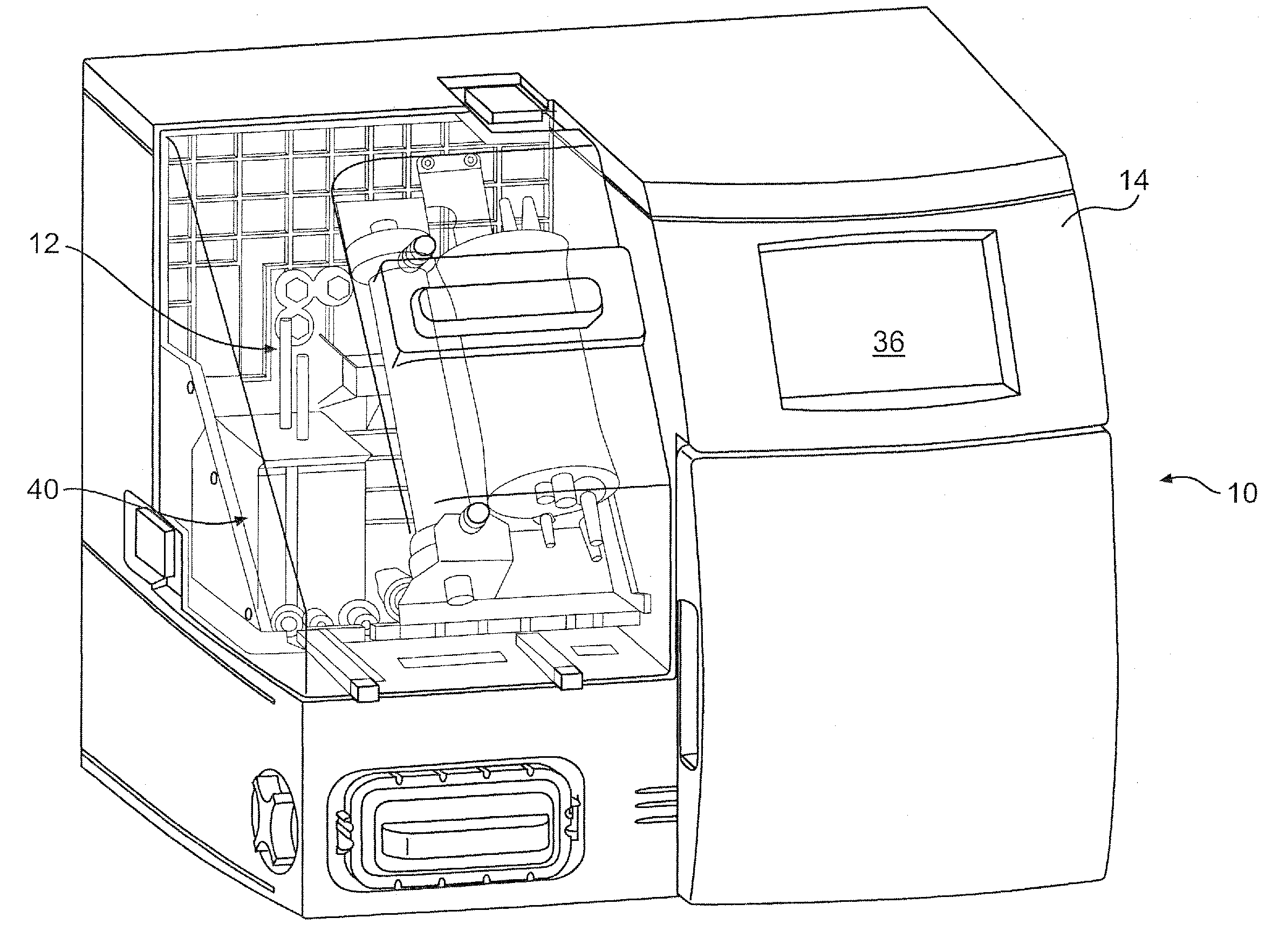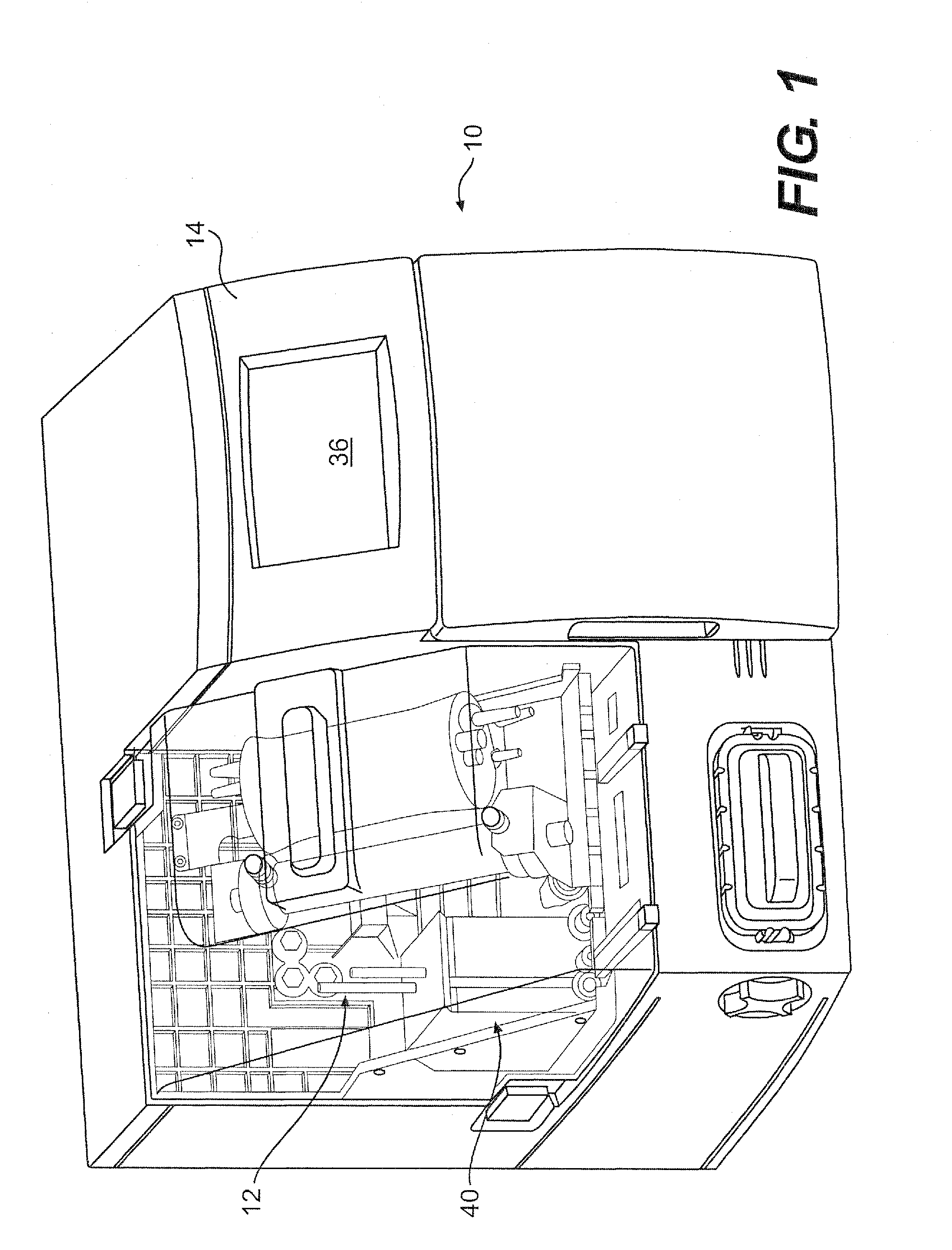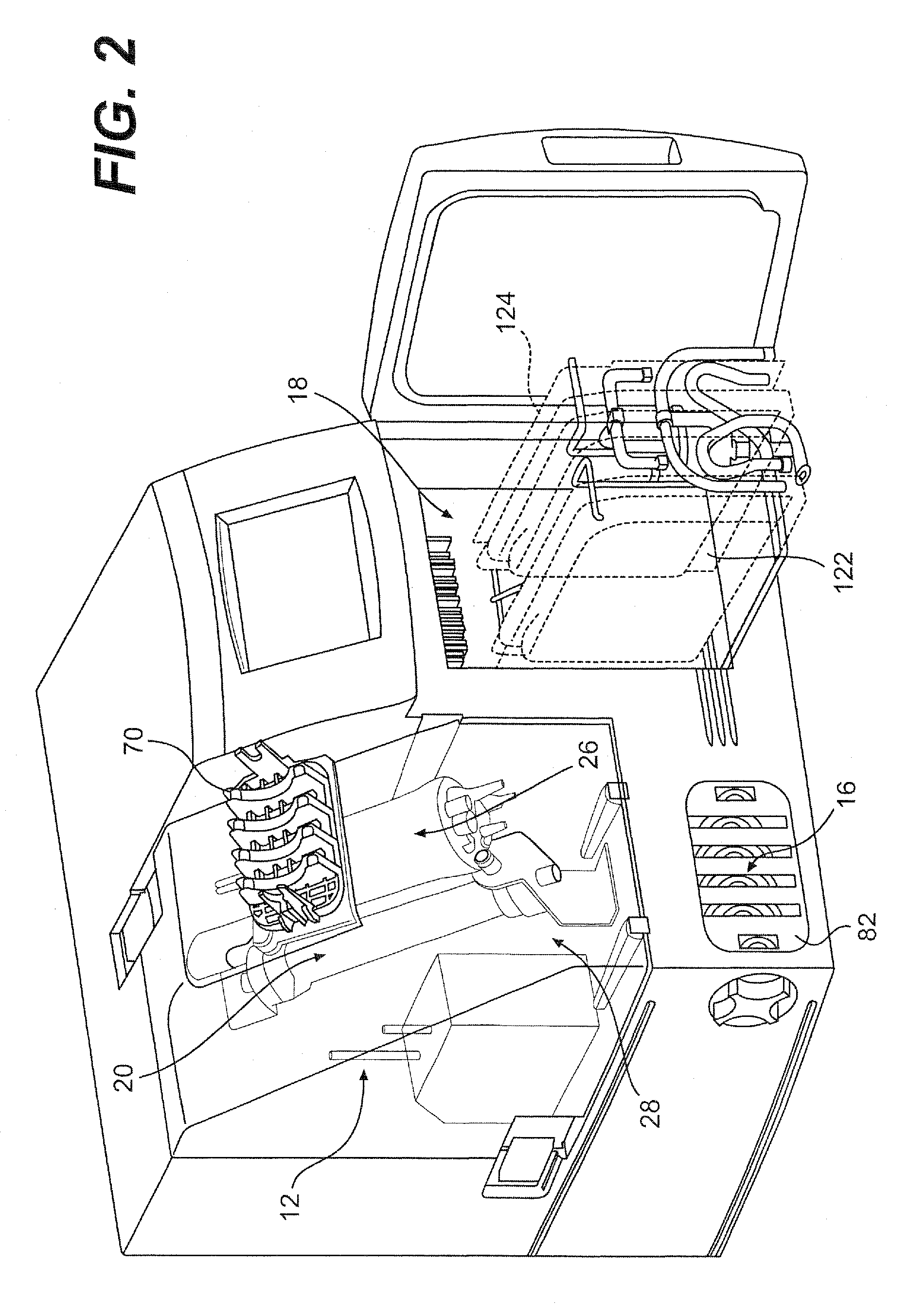Method and system for the production of cells and cell products and applications thereof
a cell culture and cell technology, applied in the field of cell culture system, can solve the problems of large manufacturing facilities, high cost, and high cost, and achieve the effects of preventing cross-contamination, facilitating direct application to therapies, and reducing the need for skilled technicians
- Summary
- Abstract
- Description
- Claims
- Application Information
AI Technical Summary
Benefits of technology
Problems solved by technology
Method used
Image
Examples
Embodiment Construction
[0072]Referring to FIG. 1, the present invention provides a fully integrated system 10 for producing cells and cell derived products in a closed, self-sufficient environment. More specifically, the system allows for cell expansion and harvest of cells and their products with minimal need for technician interaction. As will be described further herein, the device incorporates cell culture technology, for example, hollow fiber or similar bioreactor perfusion technology, with all tubing components other than the media feed, harvest tubing and tubes threaded through the pump cassette, encased in a single-use, disposable incubator 12. Following bioreactor inoculation with cells, the system follows pre-programmed processes to deliver media, maintain pH, maintain lactate levels, control temperature and harvest cells or cell-secreted protein. Standard or unique cell culture growth parameters can be programmed prior to bioreactor inoculation, such that, various cell types can be expanded and...
PUM
| Property | Measurement | Unit |
|---|---|---|
| size | aaaaa | aaaaa |
| temperature | aaaaa | aaaaa |
| pH | aaaaa | aaaaa |
Abstract
Description
Claims
Application Information
 Login to View More
Login to View More - R&D
- Intellectual Property
- Life Sciences
- Materials
- Tech Scout
- Unparalleled Data Quality
- Higher Quality Content
- 60% Fewer Hallucinations
Browse by: Latest US Patents, China's latest patents, Technical Efficacy Thesaurus, Application Domain, Technology Topic, Popular Technical Reports.
© 2025 PatSnap. All rights reserved.Legal|Privacy policy|Modern Slavery Act Transparency Statement|Sitemap|About US| Contact US: help@patsnap.com



